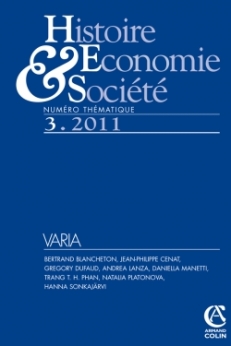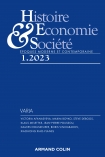
Histoire, économie & société (3/2011)
Pour acheter ce numéro, contactez-nous
Recevez les numéros de l'année en cours et accédez à l'intégralité des articles en ligne.
L’élaboration de la capitation de 1695, impôt novateur qui toucha l’ensemble de la population, y compris les privilégiés, est le fruit d’une longue maturation, qui a impliqué de nombreux conseillers du roi. Parmi eux, on trouve évidemment des spécialistes des finances (le contrôleur général Pontchartrain, les frères Le Pelletier, Desmarets), mais aussi des militaires influents et « éclairés », tels Vauban et surtout Chamlay, qui fut le principal animateur du projet. S’il était, comme son ami Vauban, favorable à l’idée de taxer tous les revenus sans exception, il se heurta au conservatisme de Pontchartrain et se rallia finalement à la solution plus prudente et pratique d’un tarif répartissant les contribuables en 22 classes. Néanmoins, son idée originelle finit par aboutir en partie lors de l’instauration du dixième en 1710.
The elaboration of the capitation of 1695, an innovating tax which touched all the population, including privileged people, is the result of a long maturation, which involved many royal advisors. Among them, we notice of course financial specialists (the contrôleur général Pontchartrain, the brothers Le Pelletier, Desmarets), but also influent and “enlightened” militaries, like Vauban and specially Chamlay, who was the main stimulating person of the project. If he was, as his friend Vauban, favourable to the idea to tax all the incomes without exception, he faced Pontchartrain’s conservatism and finally came round to the more cautious and useful solution of a rate which distributed the taxpayers into 22 classes. But his first idea leaded in part with the creation of the dixième in 1710.

